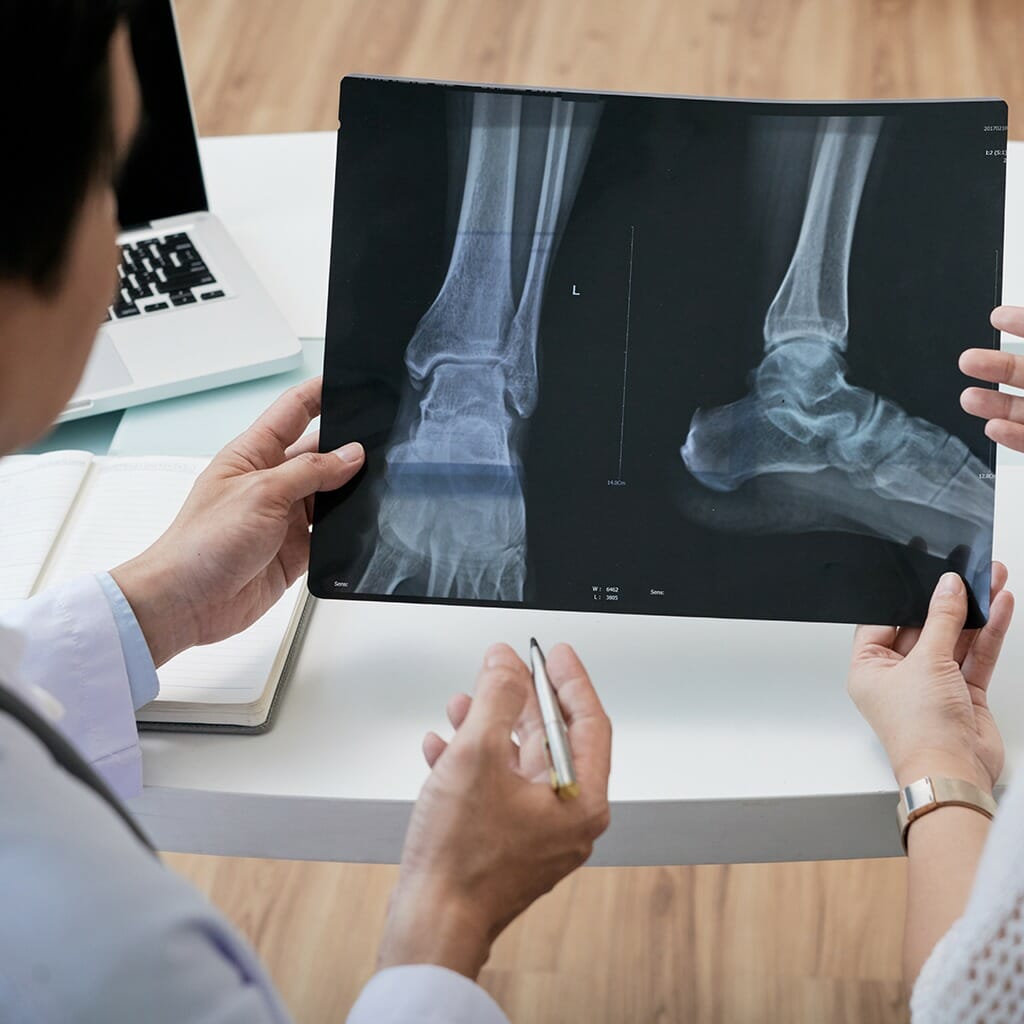In the first article of this series, we wrote about various at-home treatment options you can try if you’re suffering from heel pain on the bottom of your foot known as plantar fasciitis. These at-home options are a great start, as they are simple, less expensive, and not as aggressive as more advanced treatment options. If you need a good starting point, read about at-home treatment options for heel pain in our previous blog. This current blog will focus more on intermediate options that a podiatrist may offer or suggest based on the symptoms you are experiencing.
To review, plantar fasciitis is a common injury to the plantar fascial ligament on the bottom of the foot, specifically the bottom of the heel. The plantar fascia is a long, thick ligament that attaches to the heel bone and is a common site of overuse and subsequent inflammation and pain. Luckily, most conservative options, and/or a combination of conservative options can help alleviate the discomfort and limitations associated with this injury. Only a small percentage of individuals who do not respond after attempting various conservative options go on to have surgery in the operating room. You can read more about surgical options for heel pain here.

After attempting various at-home stretches and using podiatry-recommended medical supplies, such as simple gel cushions, visiting a Podiatrist can offer additional options that one may not have access to. For starters, steroids are a great option to help with the inflammation associated with plantar fasciitis. This may come in the form of a prescription for weeks worth of medication, or a localized injection to the heel.
“The advantage to the injection is it puts medicine directly on the spot of maximum pain“, says Dr. Christopher Menke, a double board-certified foot and ankle surgeon located in Madison, Georgia. “Oral steroids are also a good option to consider as they help reduce the inflammation internally and they have the added benefit of avoiding the anxiety and temporary discomfort associated with the injection”. Steroids alone are a great initial approach, however, their effects are enhanced when combined with additional treatments, such as a professional strapping and padding of the foot by the physician. This taping of the foot acts like a compressive splint that holds and stabilizes the plantar ligament.

Additionally, adding in a medical device, such as a night splint or a compression ankle brace can work synergistically with the steroids and splinting to help alleviate pain. “The night splint is excellent for individuals experiencing pain first thing in the morning while the compression ankle brace is effective for individuals experiencing heel pain while walking as the day progresses” adds Dr. Menke. Your podiatrist can prescribe the device that is best for you, while professionally fitting the appropriate device in their office.
Another medical device that has shown to be very beneficial for pain relief associated with plantar fasciitis, is a neuromuscular tens unit. These small devices help to disrupt and divert the pain signals to your brain. When used appropriately, these can be a great source of pain relief from the comfort of your home.

Regenerative medicine therapies have also become increasingly popular as an alternative option for patients not responding to the above traditional treatments. Shockwave therapy is the process where sound waves are used to stimulate increased blood flow to the damaged tissue. The goal is that new tissue healing will occur, resulting in a decrease in pain and inflammation. Similarly, laser therapy has been shown to help stimulate the body to repair itself naturally by enhancing tissue cells to absorb energy and nutrients at a faster rate.
Additionally, platelet-rich plasma injection therapy, also known as PRP, utilizes the individual’s own tissue to stimulate natural tissue repair. A small amount of the individual’s blood is collected and spun down in a centrifuge, and the final concentration of platelet and growth factors are re-injected back into the damaged tissue. These modalities are not covered by insurance, however, they do provide beneficial and alternative options to surgery.
If you have heel pain on the bottom of your foot and basic treatments have failed to resolve your pain, consider speaking with a podiatrist to discuss some of the options listed above. If you have exhausted the above options, a surgical procedure for plantar fasciitis may be your next step. Read more on surgery options for heel pain in the next article in this series on heel pain plantar fasciitis treatments.



